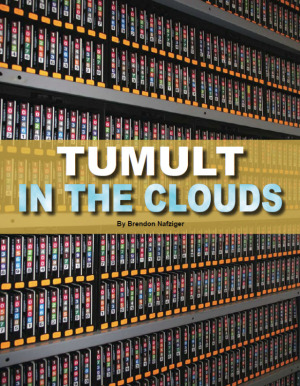by
Brendon Nafziger, DOTmed News Associate Editor | April 29, 2010
This report originally appeared in the March 2010 issue of DOTmed Business News
Looking back at the life and times of the business-speak buzzword "solution," language observers can pinpoint the exact moment when the wheels came off. They will say it was in the mid-2000s when FedEx-Kinko's first started calling the adhesives used for putting up frames "wall-hanging solutions." If a kind of sticker is a solution, then everything's a solution.
But business abhors a vacuum of buzzwords. The latest buzzwords (or term) to come around, at least in health care IT, is cloud computing. Unlike the unwieldy and largely meaningless "solution," this refers to something if not new, at least newly realizable, with some fairly real benefits to offer as well, especially for health care centers.



Ad Statistics
Times Displayed: 2548
Times Visited: 12 Fast-moving cardiac structures have a big impact on imaging. Fujifilm’s SCENARIA View premium performance CT brings solutions to address motion in Coronary CTA while delivering unique dose saving and workflow increasing benefits.
Though it has almost as many definitions as there are people who talk about it, a "cloud" in this sense, is usually a model where you access service or storage through the Internet or some other network without actually owning or maintaining the hardware housing the data. (Gmail, for example, is a cloud "solution.")
For hospitals, one of cloud computing's most promising areas is in data storage, where some predict it could revolutionize the whole storage business, leading to streamlined costs and slimmed down IT departments.
"I think the cloud is a tectonic shift in the way people access computing services and it will change the way we live in a big way," says Moe Kermani, CEO of Bycast, a Vancouver, B.C.-based company that develops cloud storage-enabling software.
That said, despite the buzz, cloud storage comes with some serious privacy and security risks, which threaten to slow, or even halt, widespread adoption. As with many new modalities, this one brings with it dangers that have to be overcome before it can be part of the mainstream.
Need for space
First, cloud is especially exciting because the resource needs of doctors, especially radiologists, are growing fast. According to a recent IBM-sponsored case study, five years of PACS images at a busy health center could rack up almost 20 terabytes of stored data (one terabyte equals one trillion bytes). It's no surprise when you consider a typical 32-slice CT scan takes up around 200 megabytes (a megabyte equals a little over one million bytes) and a digital mammography file can eat up a whopping 500 megabytes.

